Platy fish, known scientifically as genus Poecilia, are a popular choice among aquarium enthusiasts due to their unpretentious nature, striking beauty, and diverse color patterns. These live-bearing fish, like guppies, swordtails, and mollies, give birth to fully formed, swimming juveniles rather than laying eggs. This unique breeding method makes them particularly appealing for both novice and experienced aquarists.
In this article, we will explore essential care practices for platy fish and provide guidance on their breeding to help you maintain a thriving aquarium.
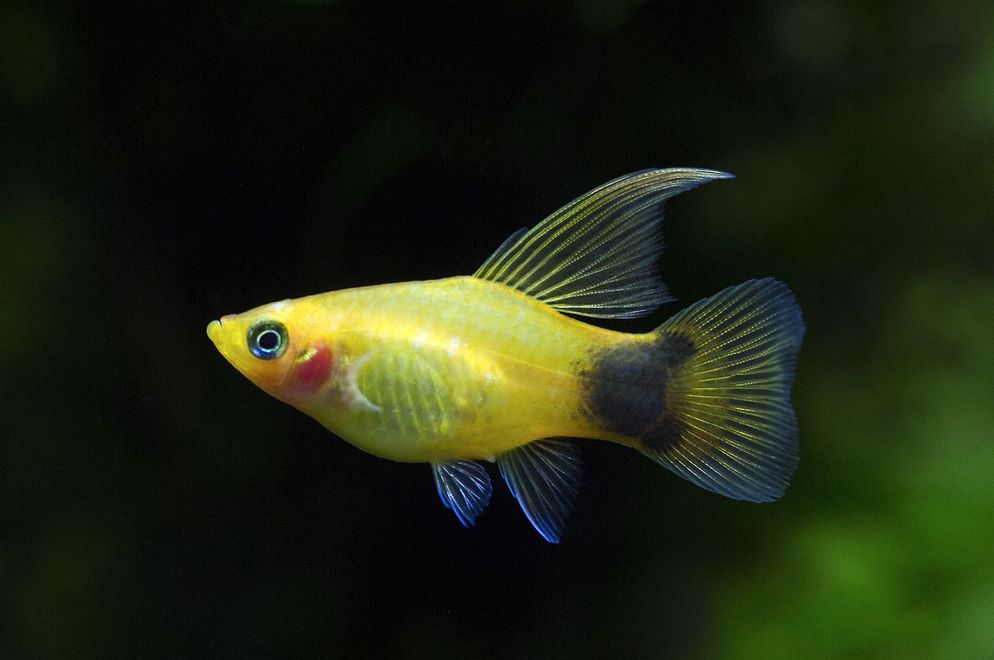
Contents
Habitat in the wild
The platy fish, scientifically known as Xiphophorus maculatus, is a popular freshwater fish belonging to the Poeciliidae family, often referred to as livebearers. This family includes various species such as guppies, mollies, and swordtails, all known for their viviparous reproduction, meaning they give birth to live fry instead of laying eggs.
The Poeciliidae family encompasses about 170 species of colorful fish found in diverse waters throughout South, Central, and North America. These species are classified into 26 genera, with Xiphophorus being one of the most recognized due to the appeal of its members, including the platy fish.
Native to Central America, platy fish are commonly found in Mexico, Guatemala, and Honduras, inhabiting slow-moving or stagnant waters such as streams, ponds, rivers, and marshes. In their natural habitats, they prefer areas with dense vegetation and plenty of hiding spots, as well as open spaces for swimming. Platy fish are well adapted to tropical climates, thriving in warm water temperatures.
The platy fish was first introduced to Europe in 1907 from southern Mexico and Guatemala, where they inhabit the lower reaches of rivers flowing into the Atlantic Ocean. In the wild, their coloration is typically ochrous, displaying brown and yellow hues with two dark spots near the tail fin. Today, numerous selectively bred varieties of platy fish exhibit a wide range of colors and fin shapes, making them a favorite among aquarium enthusiasts.
Description
Size
Platy fish typically measure between 1.5 to 2.5 inches (4 to 6 cm) in length, with females generally larger than males.
However, like many living organisms, variations in size can occur due to factors such as genetics, diet, and overall care. For instance, platy fish raised in a well-maintained environment with a balanced diet may grow larger than those in suboptimal conditions.
Lifespan
The lifespan of platy fish can vary based on several factors, including their environment, diet, and overall care. On average, platy fish tend to live for about 2 to 3 years in captivity. However, with excellent care, some individuals may thrive and reach ages of up to 4 years or more.
Body
Platy fish are characterized by their short, robust bodies and strong, wide tail fins, which contribute to their agile swimming in various aquatic environments. Their distinctive body shape enables them to navigate swiftly through dense vegetation, an important adaptation in their natural habitats. Adult males possess a modified anal fin, known as a gonopodium, which has a tubular shape. This specialized fin serves as their reproductive organ, allowing males to transfer sperm to females during mating. The shape of the gonopodium is not only functional for reproduction but also plays a crucial role in mating displays, helping to attract females.
Color
Platy fish are well-known for their impressive range of colors and patterns, making them a favorite among aquarium enthusiasts. Their coloration can vary significantly, as they have been selectively bred to exhibit numerous hues and combinations. Common color variants include vibrant reds, blues, yellows, and even combinations featuring speckles and stripes. The diversity in coloration is not only visually appealing but also reflects the adaptability and hardiness of these fish, which thrive in various aquatic environments.
One notable example is the disk platy fish, a specially bred variety that features a curved spine, resulting in a unique body shape. This distinctive morphology not only adds visual interest but also contributes to the fish’s appeal among collectors and hobbyists. Disk platies often showcase striking colors, which can include solid shades or intricate patterns, further enhancing their attractiveness in community tanks.
In addition to their vibrant colors, platy fish exhibit various patterns and shapes, further increasing their appeal among aquarium enthusiasts. The variety in color and shape not only enriches the aesthetic value of aquariums but also allows aquarists to express their personal style when designing their aquatic environments. Some of the most popular platy color variations include the red wagtail, sunset, and blue Mickey Mouse platies, each with unique characteristics that can add a delightful flair to any tank.
| Characteristic | Description |
|---|---|
| Scientific Name | Xiphophorus maculatus |
| Common Name | Platy Fish |
| Family | Poeciliidae |
| Origin | Central America (Mexico, Guatemala, Honduras) |
| Habitat | Slow-moving or stagnant waters, streams, ponds, marshes with dense vegetation and hiding spots |
| Lifespan | 2 to 3 years (can vary with care and environment) |
| Size | Typically 2.5 to 3 inches (6 to 7.5 centimeters) in length |
| Colors | Various colors and patterns, including red, orange, yellow, blue, and black |
| Behavior | Peaceful, sociable, and generally non-aggressive |
| Water Temperature | 72°F to 82°F (22°C to 28°C) |
| pH Range | 7.0 to 8.0 (slightly alkaline to neutral) |
| Tank Size | Minimum 10-gallon (37.8 liters) for a small group |
| Diet | Omnivorous – eats both plant matter and small invertebrates; thrives on flake or pellet food supplemented with live or frozen treats |
| Breeding | Viviparous – females give birth to live fry |
| Compatibility | Generally peaceful and suitable for community tanks |
| Suitable Tankmates | Peaceful community fish that prefer similar water conditions, e.g., guppies, mollies, swordtails, tetras, and other livebearers |
| Filtration | Adequate filtration to maintain water quality and keep ammonia/nitrite levels at zero |
| Plants | Provide live or artificial plants for hiding and exploring |
| Lighting | Moderate lighting to reduce stress |
| Temperament | Generally docile and easy to care for |
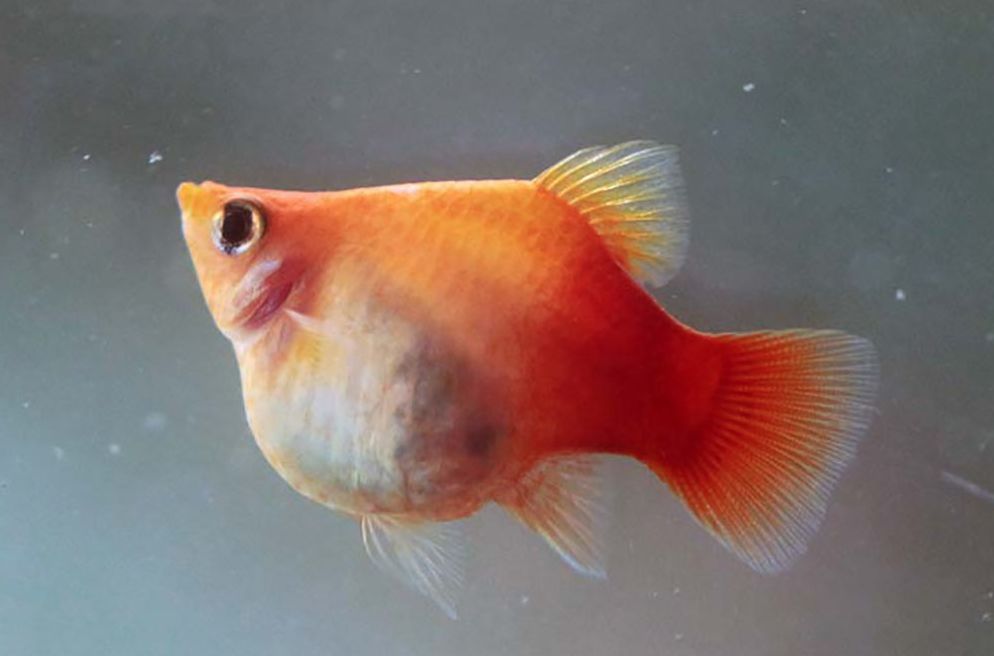
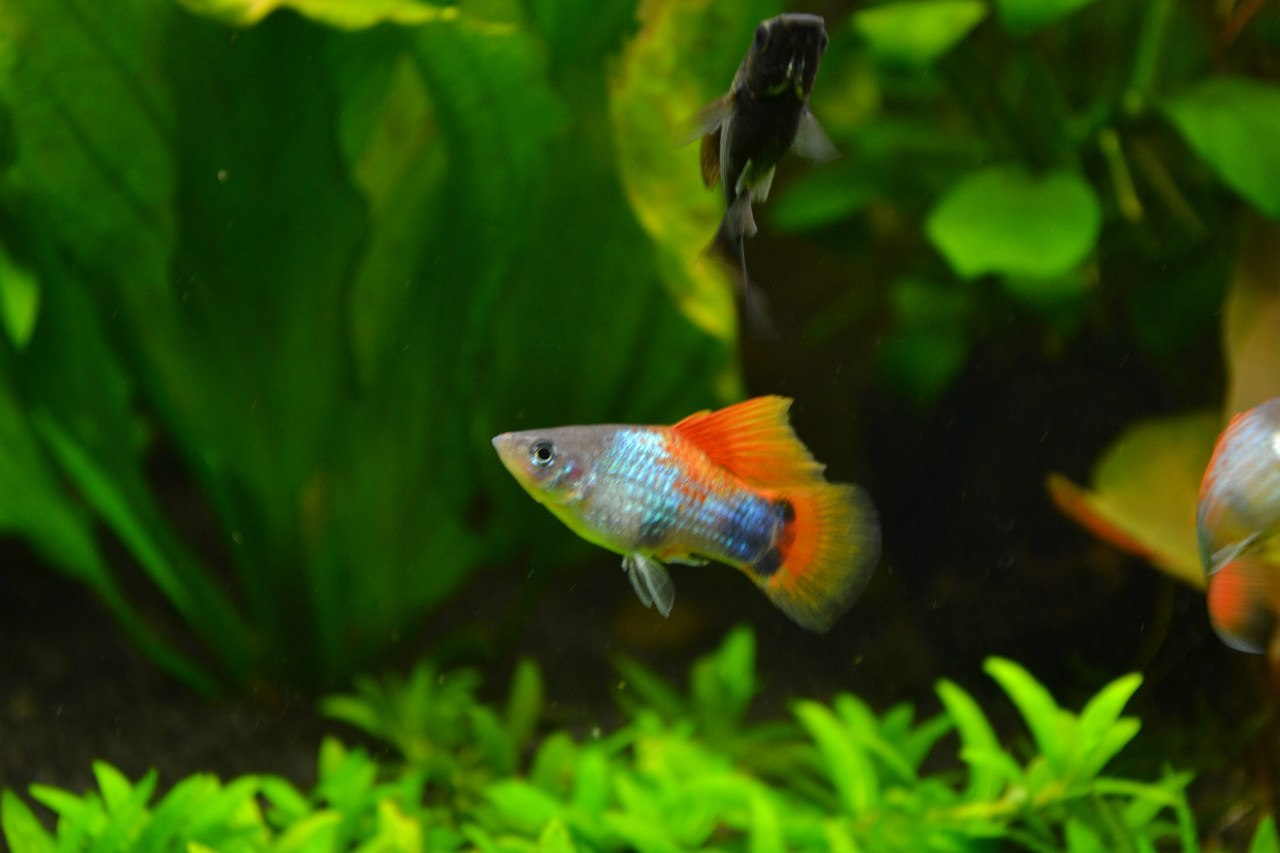
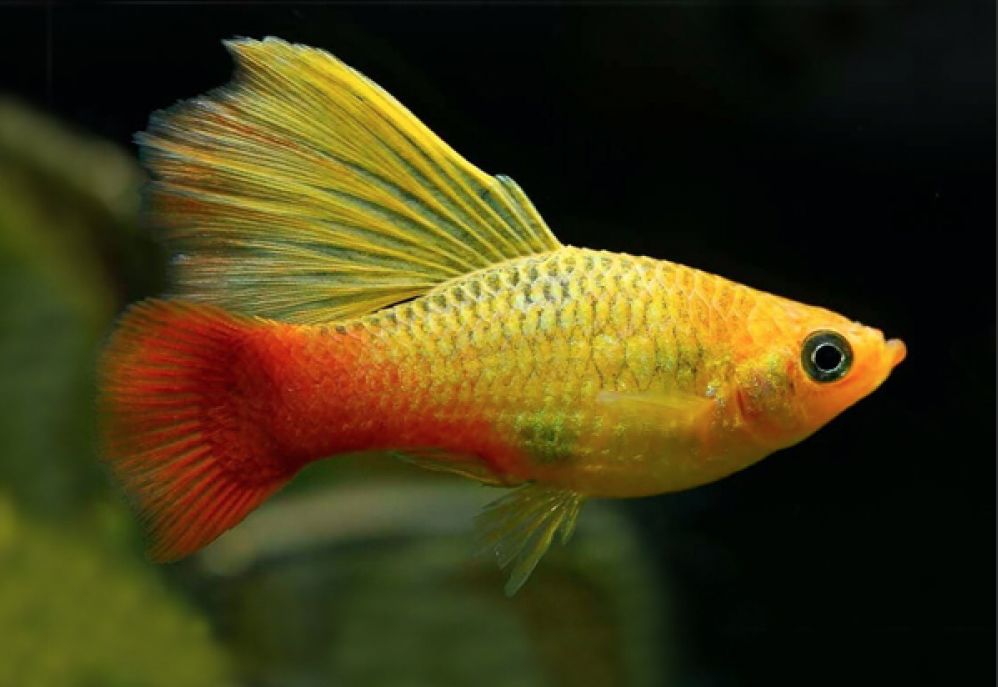
Difficulties in keeping
The platy fish is an excellent choice for both beginners and experienced aquarists, as there is a wide variety of interesting species to keep. Generally considered to be relatively easy to care for, platy fish are popular among novice fishkeepers. However, like any aquatic species, they have specific requirements that must be met to ensure their health and well-being.
Often, platy fish coexist with other livebearers in a community tank, such as swordtail fish. The challenge arises from the fact that these species can look quite similar in the wild, especially with the increasing number of hybrids that have emerged through selective breeding. As the author of this article can attest, having numerous platies in the tank can sometimes lead to confusion about whether they are platies or swordtails, particularly when observing just one or two fish. Fortunately, both species share identical tank conditions and care requirements, making them suitable companions in a community setting.
Platy fish are generally peaceful and do not exhibit aggression towards their own kind, unlike swordtail fish, which can be more territorial. This allows for a favorable male-to-female ratio in your tank, with one male recommended for every 2 to 3 females. This arrangement not only helps reduce stress among the fish but also promotes healthy breeding behaviors, as males will display courtship rituals to attract females.
Keeping in a tank
Tank size
Almost like all live-bearing fish, platy fish are not demanding and have a good temperament, making them suitable for community tanks. While they can thrive in tanks with a capacity starting from 10 gallons (37.8 liters), it is generally advisable to provide a larger aquarium to promote their well-being.
The recommended tank size for platy fish largely depends on the number of fish you plan to keep and whether you intend to include other species in the aquarium. Although platy fish are relatively small and can adapt to smaller tanks, ensuring sufficient space is essential for their health and comfort.
For a small group of platy fish (3 to 5 individuals), a minimum tank size of 10 gallons (37.8 liters) is typically suggested. However, if possible, opting for a larger tank—such as a 20-gallon (75.7 liters) or 30-gallon (113.6 liters) aquarium—offers several benefits. More space allows for better water quality and provides ample room for swimming and exploring, which contributes significantly to the overall health and happiness of the fish. In larger tanks, platies can exhibit more natural behaviors and enjoy a less stressful environment.
If you plan to keep other species alongside your platies, such as peaceful community fish, it’s important to factor in the additional space required for those fish as well. Always research the specific needs of the species you wish to keep together to ensure their compatibility with the chosen tank size. Peaceful community fish, such as tetras or guppies, can coexist well with platies, provided there’s enough space and hiding spots for everyone.
Keep in mind that larger tanks are generally easier to maintain and offer more stability in water parameters, such as temperature and pH. They provide a better buffer against sudden changes, which can be crucial for the health of all fish in the aquarium.
Water parameters
Here are the ideal water parameters for platy fish:
Carbonate Hardness (KH): 5 to 20 dKH
KH helps stabilize the pH in the aquarium, providing a buffer against rapid changes. Platies can tolerate a range of KH values, but stability is crucial.
Temperature: 72°F to 82°F (22°C to 28°C)
Platy fish are comfortable in a wide range of temperatures but tend to prefer slightly warmer water. Fluctuations outside this range can cause stress, so it’s important to monitor and maintain a consistent temperature.
pH Level: 7.0 to 8.0
Platies can tolerate a slightly alkaline to neutral pH. Keeping the pH within this range is crucial for their overall health, as extreme variations can lead to health issues.
Ammonia and Nitrite: 0 ppm
Both ammonia and nitrite are toxic to fish, including platies. Ensuring these levels remain at zero is essential, typically achieved through a well-established nitrogen cycle in the aquarium.
Nitrate: Below 40 ppm
Nitrate is a byproduct of the nitrogen cycle and is less toxic than ammonia and nitrite. Regular water changes are necessary to keep nitrate levels in check, as elevated levels can still be harmful over time.
General Hardness (GH): 8 to 12 dGH
Platies prefer moderately hard water, with GH measuring the concentration of calcium and magnesium ions. This hardness supports their physiological processes and overall health.
Substrate
Platy fish are not particularly picky about the substrate in their aquarium, making them adaptable to various types of substrates. However, some options may work better than others depending on the overall setup and the other species you plan to keep.
Gravel is a common and practical substrate choice for platy fish tanks. Available in various colors and sizes, it allows aquarists to create an aesthetically pleasing environment. Additionally, gravel provides a surface for beneficial bacteria to grow, which plays a crucial role in the biological filtration process, helping to maintain water quality.
Sand is another excellent option, especially if you plan to keep live plants in your aquarium. It offers a natural appearance and is particularly appreciated by some bottom-dwelling species, such as corydoras catfish, which thrive in sandy environments. However, it’s important to note that sand can trap debris more easily than gravel, necessitating more frequent cleaning to prevent the buildup of waste.
If you’re interested in keeping live aquatic plants, consider using a plant-specific substrate. These substrates often contain essential nutrients that promote healthy plant growth, which can enhance the overall health of your aquarium ecosystem. Nutrient-rich substrates can help plants thrive, providing oxygen and improving water quality for your platies.
While not as common, some fishkeepers opt for a bare-bottom tank. This substrate choice simplifies cleaning and maintenance, allowing for easy removal of debris and waste. However, a bare bottom may not provide the most natural look for your aquarium, and it might limit the types of plants and fish you can keep.
When selecting a substrate, consider the specific needs of both the plants and fish you plan to keep. The substrate can influence not only the aesthetic appeal of your aquarium but also the behavior and health of your aquatic inhabitants. Before adding any substrate to your tank, it’s essential to rinse it thoroughly to remove any dust or debris that could cloud the water or impact water quality. Proper preparation ensures a clean and welcoming environment for your platy fish and any other species you may choose to introduce.
Decor
Creating a suitable and aesthetically pleasing environment for platy fish involves carefully selecting decorations and features that mimic their natural habitat while providing them with places to hide, explore, and feel secure. Incorporating various elements can enhance both the appearance of the aquarium and the well-being of the fish.
One of the most beneficial additions to a platy fish tank is live aquatic plants. These plants improve water quality by absorbing nitrates and providing oxygen, essential for maintaining a healthy aquatic environment. Platy fish enjoy swimming through and hiding among the plants, creating a more natural setting. Some suitable plant options include Java fern, Anubias, Amazon sword, and Vallisneria, all of which thrive in a range of water conditions and are relatively easy to care for.
Floating plants, such as water lettuce or duckweed, are also great additions. They offer shade, reduce light intensity, and can help regulate water parameters by absorbing excess nutrients. These plants can create a more dynamic environment, mimicking the natural conditions platy fish would encounter in the wild.
For those who prefer low-maintenance options, artificial plants can provide aesthetic appeal and hiding spots without the need for constant upkeep. When choosing artificial plants, look for realistic designs made from soft materials to prevent any injuries to the delicate fins of your fish.
Incorporating driftwood into your aquarium not only enhances its natural look but also provides essential shelter for platies. Varieties like Malaysian driftwood can even help lower the pH of the water if needed, contributing to a stable and healthy environment for your fish.
Additionally, adding smooth rocks and stones can create caves and crevices for platies to explore and use as hiding places. This not only enriches their habitat but also encourages natural behaviors, providing them with a more engaging environment.
When arranging decorations, ensure that there is enough open swimming space for the platy fish, as they enjoy swimming freely. Creating different levels and areas in the tank, from the bottom to the surface, adds visual interest and gives the fish more options for exploration and play.
It’s crucial to choose decorations that are aquarium-safe and won’t leach harmful substances into the water. Thoroughly rinsing all decorations before adding them to the tank is essential to remove any dust or residues that could affect water quality.
Tank mates
Unlike swordtail males, platy males are generally friendly and exhibit a more peaceful demeanor, with only minor skirmishes occurring occasionally as they compete for the attention of females. To minimize any potential aggression and ensure a harmonious environment, it’s advisable to maintain an appropriate male-to-female ratio in the tank, ideally keeping two to three females for each male. This helps reduce competition and allows all fish to thrive in a more stable social structure.
Platy fish are known for their peaceful and social nature, making them excellent candidates for community aquariums. They tend to get along well with a wide variety of tank mates, provided that those species share similar water requirements and temperaments. When selecting tank mates for platies, it’s crucial to choose fish that are also non-aggressive and can tolerate similar water parameters, such as temperature, pH, and hardness.
Some suitable companions for platy fish include other livebearers, such as guppies and mollies, as well as peaceful species like tetras, rasboras, and corydoras catfish. These fish not only complement the platy’s friendly disposition but also contribute to a vibrant and dynamic aquarium environment.
Here are some suitable tank mates:
- Guppies (Poecilia reticulata): Guppies and platies are both livebearers and have similar care requirements. They come in a variety of colors and patterns, making them a colorful addition to the aquarium.
- Mollies (Poecilia sphenops): Another type of livebearer, mollies, can thrive alongside platies as long as the water conditions are suitable. Mollies also come in various colors and can add interest to the tank.
- Swordtails (Xiphophorus hellerii): Like platies, swordtails are also part of the Poeciliidae family. They have peaceful temperaments and prefer similar water conditions.
- Tetras: Many tetra species are peaceful and enjoy similar water parameters. Some popular choices include neon tetras, cardinal tetras, and black skirt tetras.
- Corydoras Catfish: Corydoras catfish are peaceful bottom-dwellers that help keep the substrate clean. They are social fish and should be kept in groups of at least 3 to 6 individuals.
- Danios: Zebra danios or other peaceful danio species can be good companions for platy fish. They are active swimmers and can add movement to the aquarium.
- Rasboras: Harlequin rasboras, chili rasboras, and other rasbora species are peaceful and tend to stay in the mid to upper water levels.
- Small Loaches: Certain small loach species, like kuhli loaches, can coexist with platy fish. Loaches are bottom-dwellers that enjoy hiding in crevices.
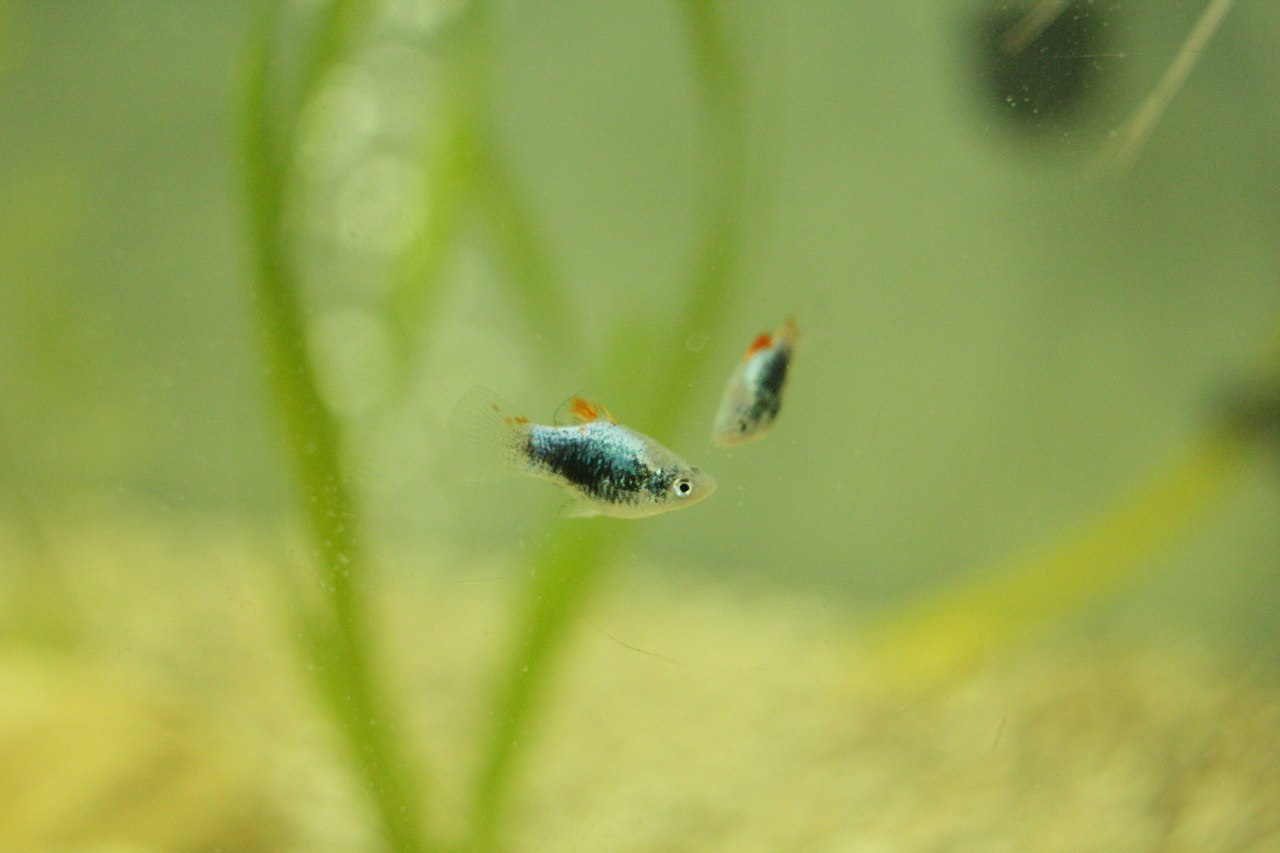
Diet
In their natural habitat, platy fish primarily feed on a diet composed of insects and algae. This diverse diet plays a crucial role in their overall health and well-being. In a home aquarium, platy fish eagerly consume a variety of foods, but it is essential to ensure that their diet includes sufficient vegetable components to promote optimal health.
In the wild, algae constitutes a significant portion of a platy fish’s diet, providing essential nutrients and aiding in the function of their gastroenteric tract. As such, platies thrive on foods that are high in vegetable fiber, which helps support their digestive health. In captivity, a balanced diet should include not only high-quality commercial fish flakes with vegetable supplements but also fresh, boiled vegetables. Some excellent options include cucumbers, squash, and spinach, which can be easily prepared and offered to the fish.
Offering a varied diet enhances the nutritional intake of platy fish, promoting vibrant colors, robust growth, and overall vitality. Platy fish have a high tolerance for various food types, including high-protein options, but a plant-based diet is crucial for their digestive health. It’s recommended to feed them small amounts of food two to three times a day, ensuring that any uneaten food is promptly removed to maintain water quality.
This balanced approach to feeding will help ensure that your platy fish remain healthy and active, enriching their environment and enhancing their longevity in the aquarium. Additionally, introducing a variety of foods not only keeps platy fish engaged and active but can also reduce the likelihood of boredom and associated stress in the aquarium.
Gender differences: male vs female
Gender dimorphism in platy fish (Poecilia) is quite pronounced, making it relatively easy to distinguish between male and female individuals. Here are some key differences that can help you identify each gender:
Size: In general, female platies are larger than their male counterparts. Females can grow up to 2.5 to 3 inches (approximately 6 to 7.5 centimeters) in length, while males are typically smaller, reaching about 2 to 2.5 inches (approximately 5 to 6 centimeters). This size difference is a common trait among many livebearers.
Fin Shape: One of the most noticeable distinctions is in the shape of the anal fin, which is located just below the fish’s abdomen. In males, this fin is modified into a gonopodium—a long and slender structure that facilitates the transfer of sperm during mating. Conversely, the anal fin of females is more rounded and lacks the elongated shape, making it a useful indicator for gender identification.
Coloration: While both male and female platies can showcase vibrant colors and patterns, males typically exhibit more intense and striking hues, particularly during courting displays. They may flaunt bright reds, blues, and yellows to attract females. In contrast, females often display more subdued colors, especially when not pregnant or in a mating mood.
Gravid Spot: Female platies possess a gravid spot, a dark, triangular mark located near the rear of their abdomen. This spot becomes more pronounced and darker when the female is pregnant, serving as an indicator that she is carrying developing fry. Observing this spot can help aquarists anticipate when to prepare for new arrivals in the tank.
Behavior: Males are generally more active and exhibit distinct courting behaviors when interested in mating. They may chase females, perform displays, and occasionally spar with other males to establish dominance. In contrast, female platies are typically calmer and less prone to territorial behaviors, focusing more on foraging and swimming.
Reproduction: As livebearers, platies give birth to live fry instead of laying eggs, a reproductive strategy that allows for quicker population growth in favorable conditions. Females can store sperm internally and may produce multiple batches of fry from a single mating, even without further contact with a male. During mating, males use their gonopodium to transfer sperm to females, showcasing their reproductive adaptation.
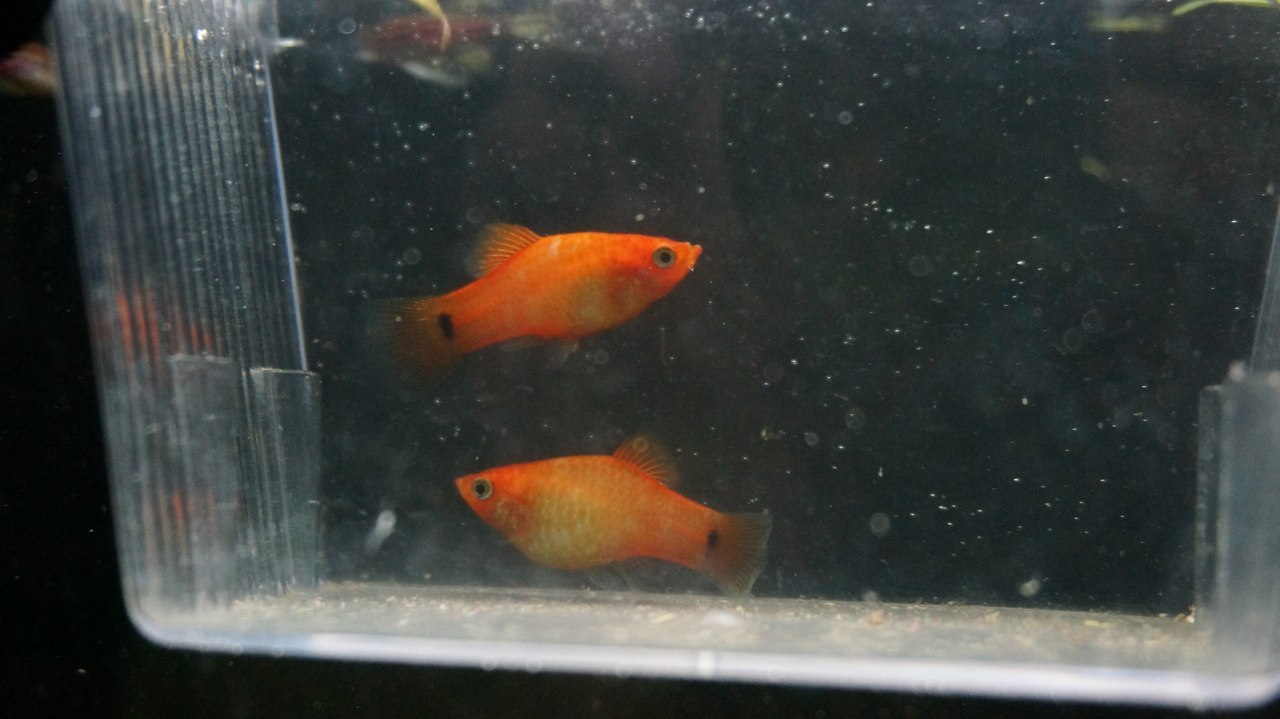
Breeding
Platy fish are relatively easy to breed, requiring no special preparations beyond having both a male and a female in the same tank. These fish reach reproductive maturity at around 5 to 6 months of age. After mating, a female can carry the fertilized eggs for about 1.5 months or longer before giving birth to live fry.
In my observations, the number of offspring produced by platy fish is generally modest. For instance, one of my two female platies gave birth to 15 juveniles, while the other produced 26. The variability in litter size can depend on various factors, including the health of the female and the conditions in the tank.
Identifying a pregnant platy is relatively straightforward. The female’s abdomen will appear noticeably enlarged, and if the skin is sufficiently transparent, you might even catch a glimpse of the developing fry’s black eyes through the abdomen. This visual cue is a clear indicator that she is nearing her time to spawn.
As the female approaches the spawning period, her abdomen will take on a more angular shape, signaling that she is close to giving birth. To prevent the fry from being eaten in a community tank, it is advisable to transfer the pregnant female to a separate spawning tank. This move helps protect the young fish, as adult platies and other tank mates may view them as food.
The juveniles are born resembling swordtail fry; however, within 1 to 2 weeks, they begin to show distinct differences. They develop a stockier and shorter body shape and acquire two small black spots on either side of the tail fin where it meets the body.
Caring for platy fry is relatively easy, as they are born quite large and are ready to swim immediately. Their diet can include finely crushed egg yolk, high-quality dry food, and specially formulated fry food. It’s important to provide a varied diet to support their growth and development. Regular monitoring of their health and water quality is crucial to ensure the fry thrive in their early days.
By creating a suitable environment and providing proper nutrition, aquarists can successfully raise platy fry and enjoy the rewarding experience of watching them grow.